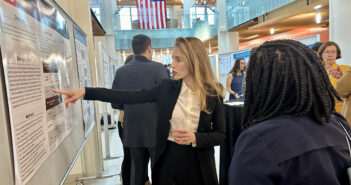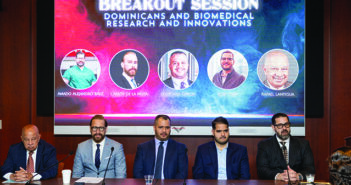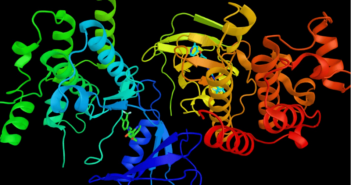Research Infrastructure
Since the early days of the Division of Biology and Medicine, research space has been a precious commodity, one that is expensive to obtain and maintain, and often scarce. In 1962, the J. Walter Wilson Laboratory opened with 40,000 square feet of labs, instructional spaces, and offices for physiology, microbiology, biochemistry, and plant physiology. The building remained in use until 2008, when it was renovated to become a hub for student service functions. It was renamed Paige-Robinson Hall in 2018.
In 1969, Brown dedicated its new Biomedical Building with a celebration that included an address by biochemist and author Isaac Asimov. The new building boasts a fourstory tower of labs for research in biology and medicine, two levels of teaching and lab spaces, and an extensive animal care facility. Known as the BioMed Center, or BMC, it housed Medical School classes until 2011.
Amid the city of Providence’s renaissance, Brown retrofitted a 74,000-square-foot former factory at 70 Ship St. in the Jewelry District to become the Laboratories for Molecular Medicine in 2004. The five-story LMM is home to the Center for Genomics and Proteomics—the double-helix strands of DNA replaced the Twist-o Flex watchbands once made in the building by the Speidel company. It also holds facilities for X-ray crystallography and nuclear magnetic resonance and a transgenic core, as well as seminar rooms and a lecture hall. Two years later, Brown completed its largest construction project to date, the Sidney E. Frank Hall for Life Sciences. The five-story, 169,000-square-foot structure sits adjacent to the BMC and houses the departments of Molecular Biology, Cell Biology, and Biochemistry and of Neuroscience, and a functional MRI facility. It was named for the liquor magnate and member of the Class of 1942, who left after a year due to his inability to pay tuition and later gave $120 million to the University.
With a renewed commitment to research that has an impact on human health, in 2022 Brown announced three new projects in the Jewelry District to increase lab space. Planning is underway for a new Integrated Life Sciences Building; Brown intends to serve as anchor tenant in a public-private life sciences development; and the University signed a lease for wet lab space in the Wexford Science & Technology building at 225 Dyer St.
A History of Research
02015 The Brown Center for Biomedical Informatics is founded to develop and implement informatics approaches in biomedicine and health care. Led by founding director I. Neil Sarkar, PhD, MLIS, and founding associate director Liz Chen, PhD, the center provides vital informatics services to researchers in addition to conducting its own studies using health data.
2015 The family of former Hasbro Toys CEO Alan Hassenfeld makes a $12.5 million gift to establish the Hassenfeld Child Health Innovation Institute to investigate the urgent health needs of Rhode Island’s children. It was established as a collaboration between the School of Public Health, Hasbro Children’s Hospital, The Warren Alpert Medical School, and Women & Infants Hospital. Researchers and child health professionals from Bradley Hospital, The Miriam Hospital, and community partners also are closely involved. The Hassenfeld family gives an additional $3 million in 2022.
2016 In June, an $11.5 million NIH grant launches the COBRE in Computational Biology of Human Disease, which analyzes data to understand and fight diseases. In July, the National Institute of General Medical Sciences awards $19.5 million to establish at Brown the partnership Advance-CTR, in support of biomedical and public health research across Rhode Island; it’s renewed for $19.9 million in 2021. And in September, Professor John Sedivy, PhD, receives $9.67 million from the NIH to study how “rogue” DNA snippets called retrotransposons may cause diseases associated with aging; the grant is renewed for $16 million in 2022.
Share.




